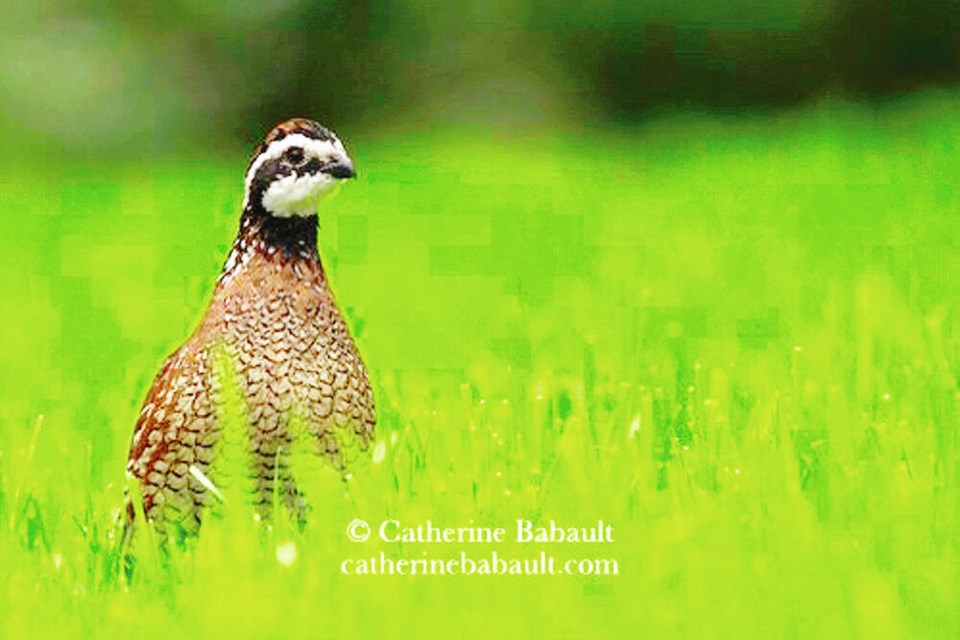Catherine Babault heard the distinct sharp whistling before she saw the birds.
She readied her camera and photographed something special — a mated pair of northern bobwhites with a small brood of chicks scurrying through the grass near Millard Nature Park, along the estuary in Courtenay.
Northern bobwhites, small ground-dwelling quails known for their sharp whistles, are almost never seen on Â鶹´«Ã½Ó³»Island — their native range is southern Ontario and the eastern United States.
But it’s the second time Babault, a professional wildlife photographer, has spotted the northern bobwhites in the same area in as many years. Both times, the pair had chicks, so she believes the birds might be making a new home in the Comox Valley.
“This is a rare sighting for this part of Canada and, to my knowledge, there are no documented records of previous sightings,” she said. “This family of bobwhites could be settling down in the Comox Valley since it is the second year that I have observed them here.”
In Canada, Ontario has the only known population of northern bobwhites thought to be native. Attempts to introduce them in British Columbia as game birds have proven unsuccessful, although the species has been introduced in Washington state, Babault said.
Babault said the northern bobwhites in the Comox Valley likely escaped from a farm or from someone who had them as pets.
Ann Nightingale of the Rocky Point Bird Observatory, an expert on Island birds, agrees with that assessment.
She said there had been only one other previous sighting of a northern bobwhite on the Island and that was in the Nanaimo area in 2006.
“They seem to be escapees, a pet that got away, or from a game farm,” said Nightingale. “There’s no expectation of them establishing naturally.”
Still, she said, the sightings of northern bobwhites are unusual and “certainly exciting.”
Northern bobwhites are considered a species at risk in Canada with only small pockets of the birds in their native range in Walpole Island First Nation in southwestern Ontario. The breeding population was estimated at 230 birds in 2000, but numbers have declined since then, according to the federal government.
Northern bobwhites in the eastern and central United States have been in sharp decline throughout the past half-century, according to the Cornell Lab of Ornithology, likely owing to habitat loss and changes in agriculture, and they are considered an increasingly high priority for conservation.
The Cornell Lab said the northern bobwhite call is one of the easiest to learn of all bird sounds.
“The two sharp whistled notes really do sound like ‘bob-white’ —and the call carries a long distance,” it said.
Babault has a knack for finding and photographing unusual species on Â鶹´«Ã½Ó³»Island.
This year, she captured a female grizzly bear and her cubs near Sayward.
Though males have been spotted on the Island for years — often swimming over from the mainland by island-hopping, the family of bears was considered a rare sight.
It still isn’t known if the female grizzly gave birth to her cubs on the Island or coaxed them to swim over with her.
Either way, experts said the existence of the female and cubs could be a sign of the re-establishment of grizzly bears on Â鶹´«Ã½Ó³»Island for the first time in modern history.



